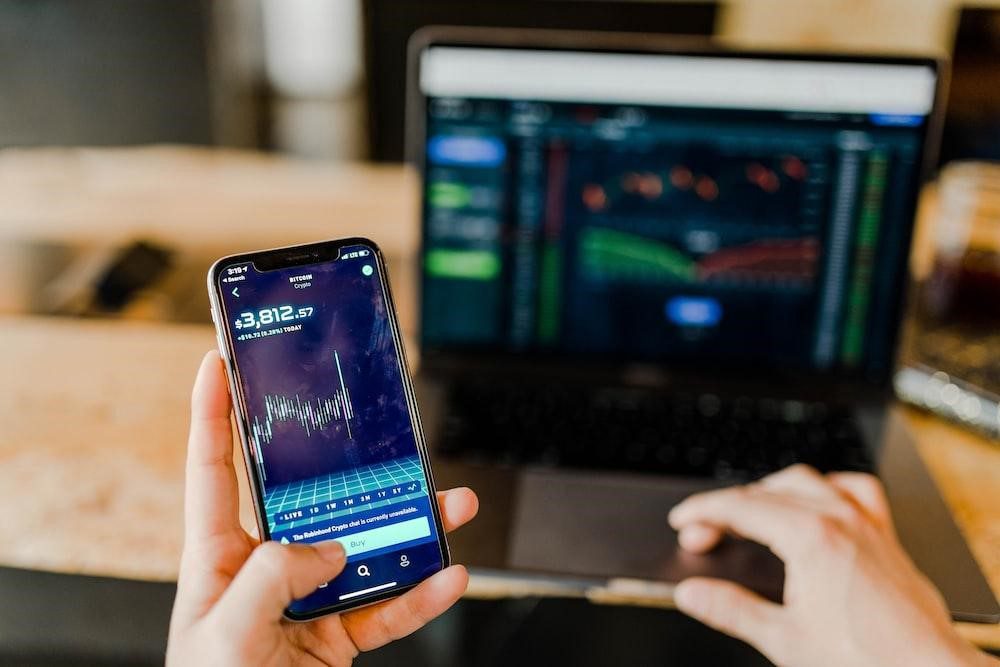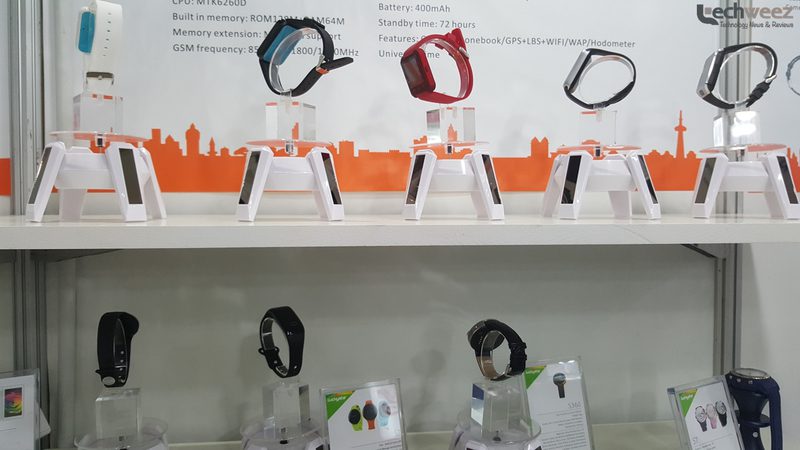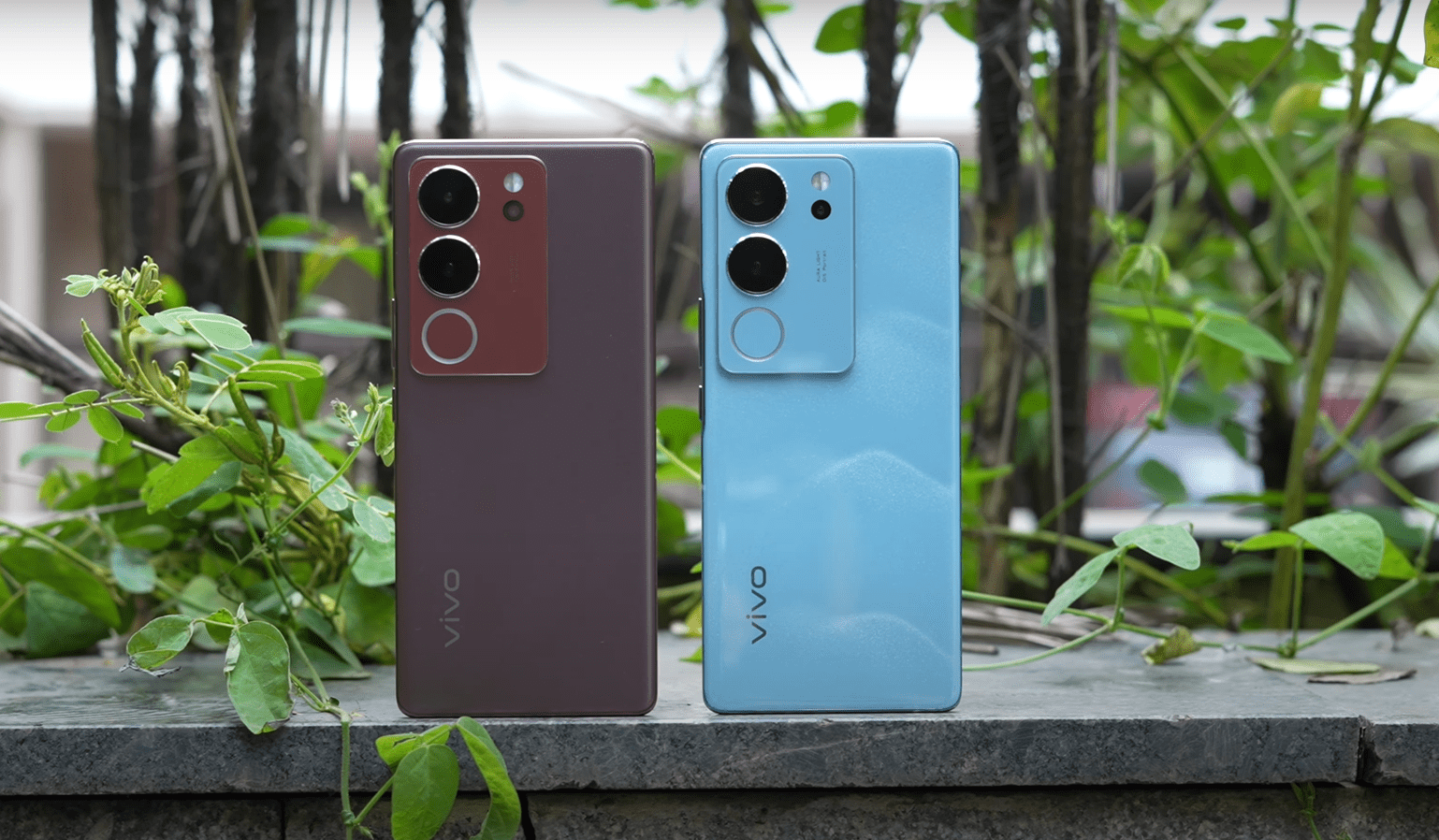Even though Apple is still the number one smartwatch vendor in the world, it’s lead is cut to size when we look at the wearables market as a whole. Bring in the fitness trackers from Fitbit that people all over the world seem to be in love with and the affordable ones from Chinese startup Xiaomi and you have the world’s most valuable company on its knees.
According to quarterly data from the International Data Corporation (IDC), Apple slumped to third place in the list of top 5 wearables vendors in the world. Xiaomi, which sells the $15, Mi Band, rose to the second position previously occupied by the Cupertino-based company. Xiaomi is expected to release a second generation Mi Band next month as well as its first smartwatch for adults later in the year.
However, unlike the Apple Watch which was not yet in the market over a similar period last year, both Xiaomi and Fitbit saw their fitness wearables market share drop significantly. Xiaomi’s market share in Q1 2016 stood at 19%, down from 22.4% same time last year. Fitbit dropped from 32.6% to 24.5%. Even with the decline in market share, all top 5 wearables vendors managed to increase the number of units they shipped hinting at increased demand for wearables. Overall, wearable shipments were up by 67.2% year over year. Smartwatches faired even much better with a 100% rise in shipments year over year while basic wearables saw a 65% growth in shipments YoY.
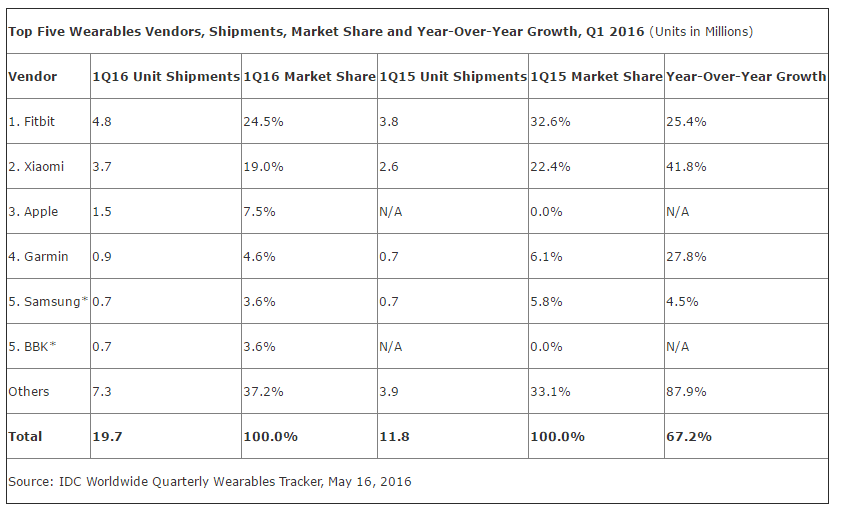

Children’s wearable devices brand XTC, a subsidiary of Chinese company BBK Electronics, managed to retain its slot at the top of the wearable vendors table by shipping 700,000 units in Q1 2016, the same number that Korean electronics giant Samsung managed to ship.
Samsung, which only introduced its Gear S2 smartwatch towards the end of last year, was not favoured by fortune at the start of the year. As a result, its market share dropped to 3.6% from 5.8% last year. The company is set to release a fitness wearable, the Gear Fit 2, any time now. Hopefully, that device will contribute positively to its market share in subsequent quarters since a new Gear smartwatch is not expected in the market until in mid-Q4 if it gets unveiled at IFA 2016.
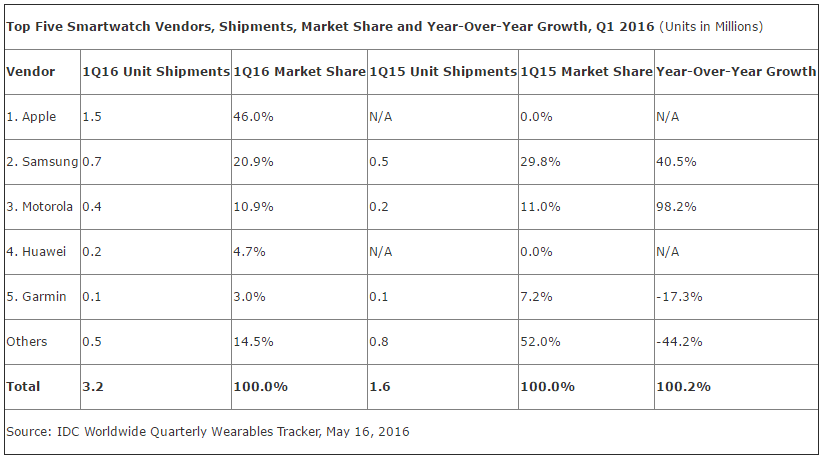

The Huawei Watch, after facing several delays, finally started selling in the fourth quarter of 2015. Interest in the device does not seem to be as high as it is for Huawei’s smartphones, though.
Huawei managed to ship only 200,000 units of the device in Q1 2016. Things were a bit better for Motorola, now a part of Lenovo, whose shipments of the two generations of the Moto 360 peaked at 400,000 units. Apple’s strategy of buying time with new bands for the Apple Watch as it works on a second generation Watch saw it ship 1.5 million units of the Apple Watch, over twice the number that its nearest competitor, Samsung, managed to ship.
In all, 19.7 million units of wearables were shipped in the first 3 months of the year. 3.2 million of those were smartwatches.
Source: IDC






